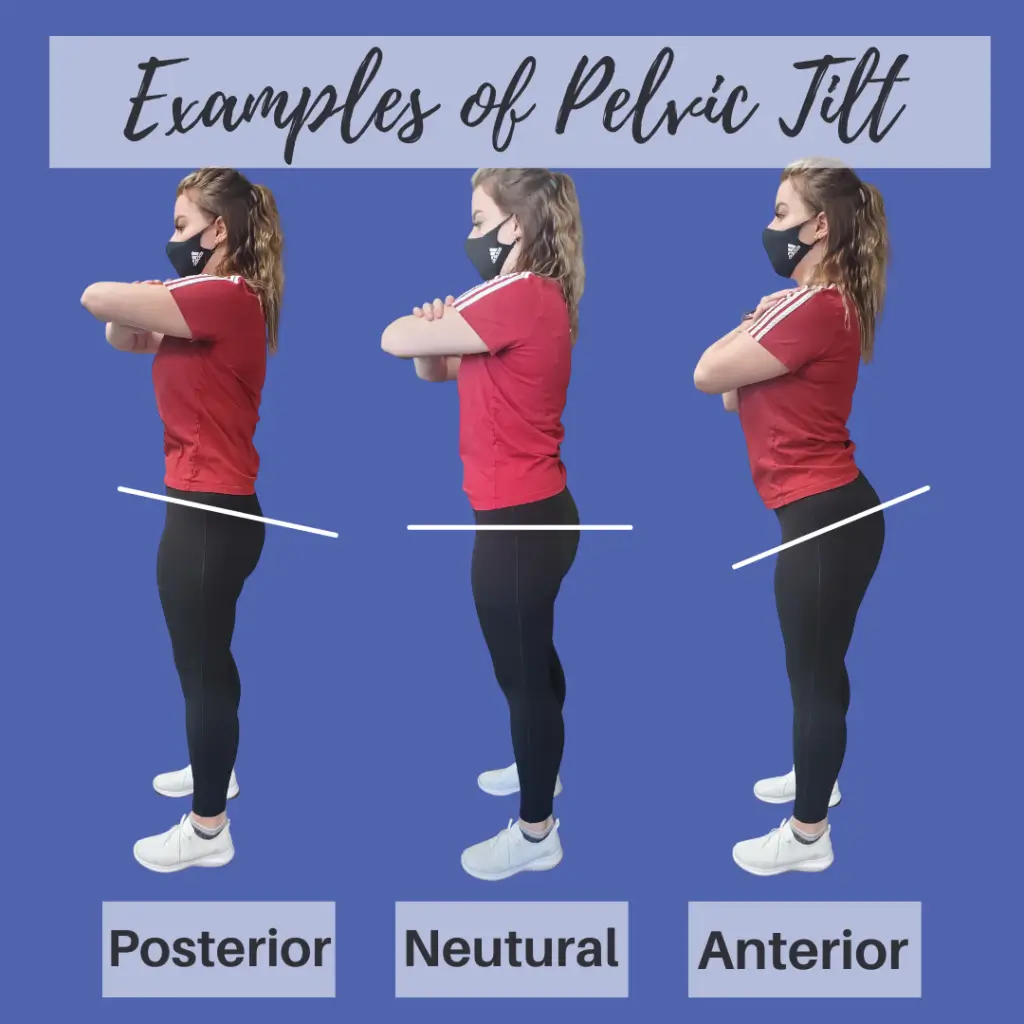Pelvic Tilt Understanding, Correcting, and Living Pain-Free
Pelvic tilt is a biomechanical phenomenon that refers to the orientation of the pelvis concerning the rest of the body. The pelvic region is a crucial part of the human anatomy, playing a pivotal role in maintaining balance, stability, and overall body posture.
Table of Contents
Anatomically, the pelvis is a complex structure comprising bones, muscles, and joints, and any deviation from its normal alignment can lead to various health issues.

Anatomy:
To comprehend pelvic tilt, it is essential to understand the anatomy of the pelvis. The pelvis consists of the hip bones, sacrum, and coccyx, forming a basin-like structure that connects the spine to the lower limbs.
The sacrum, a triangular bone at the base of the spine, is particularly crucial in maintaining stability.
Muscles, ligaments, and tendons surround the pelvis, contributing to its overall support and functionality.
Types:
Pelvic tilt is broadly classified into two main types: Anterior Tilt and Posterior Tilt.
1. Anterior Tilt:
Definition: Anterior tilt occurs when the front of the pelvis drops lower than the back, causing an increased arch in the lower back.
Causes: Weakness in the abdominal muscles, tightness in the hip flexors, prolonged periods of sitting, and poor posture are common contributors to anterior tilt.
Symptoms: Lower back pain, hip pain, and an altered walking pattern are among the symptoms associated with anterior tilt.
Treatment: Strengthening the core muscles, stretching the hip flexors, and adopting proper posture are key components of treating anterior tilt.

2. Posterior Tilt:
Definition: Posterior tilt involves the tilting of the pelvis backward, flattening the natural curvature of the lumbar spine.
Causes: Weakness in the gluteal muscles, tight hamstrings, and imbalances in muscle strength can lead to posterior tilt.
Symptoms: Back pain, limited hip mobility, and difficulty standing upright may be indicative of posterior tilt.
Treatment: Exercises to strengthen the glutes and hamstrings, along with stretching tight muscles, form the foundation of treating posterior tilt.
Common Causes of Pelvic Tilt:
1. Muscular Imbalances:
Weakness or tightness in specific muscle groups, such as the hip flexors, hamstrings, and gluteal muscles, can contribute to pelvic tilt.
2. Poor Posture:
Prolonged periods of sitting or standing with improper posture can lead to pelvic misalignment over time.
3. Pregnancy:
The hormonal changes and the increased weight during pregnancy can alter the pelvic position, resulting in pelvic tilt.
4. Leg Length Discrepancy:
A significant difference in the length of the legs can contribute to an uneven distribution of weight, leading to pelvic tilt.
Symptoms of Pelvic Tilt:
1. Lower Back Pain:
Both anterior and posterior pelvic tilt can cause discomfort and pain in the lower back due to the altered spinal curvature.
2. Hip Pain:
The misalignment of the pelvis may affect the hip joints, leading to pain and reduced mobility.
3. Changes in Gait:
Individuals with pelvic tilt may experience changes in their walking pattern, potentially causing issues with balance and stability.
4. Limited Range of Motion:
Pelvic tilt can restrict the range of motion in the hips and spine, impacting daily activities and exercise performance.

Treatment and Management:
1. Physical Therapy:
A tailored exercise program designed by a physical therapist can address muscle imbalances, improve flexibility, and promote proper pelvic alignment.
2. Strengthening Exercises:
Targeted exercises to strengthen the core, glutes, and hamstrings can help restore balance to the pelvic region.
3. Stretching and Flexibility Training:
Stretching tight muscles, particularly the hip flexors and hamstrings, is essential to alleviate tension and promote a more neutral pelvic position.
4. Postural Correction:
Conscious efforts to maintain proper posture, both while sitting and standing, are crucial in preventing and managing tilt.
5. Ergonomic Modifications:
Making adjustments to the workplace or living environment, such as using ergonomic chairs and desks, can support healthy posture.
Conclusion:
It is a common condition that can have a significant impact on an individual’s quality of life. Understanding its causes, recognizing symptoms, and seeking appropriate treatment are essential steps in addressing it and preventing associated complications.
Whether through physical therapy, targeted exercises, or lifestyle modifications, taking proactive measures can contribute to the restoration of pelvic alignment and overall musculoskeletal health.